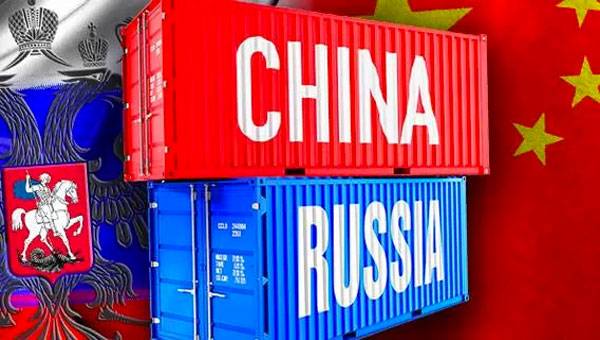
Photo: http://finversia.ru
As reported by the media, in 2022, imports from China to Russia of special equipment, including excavators, trucks and tires, increased significantly but the volume of purchases of smartphones and computers decreased, according the data provided by China.
After Russia launched a special military operation in Ukraine, much has changed on the world stage. Harsh sanctions of the European Union and the United States, the ultimate goal of which is to undermine the Russian economy, have hit our country. However, Western economists and politicians miscalculated and the announced sanctions backfired on the Western countries. Meanwhile, not all countries of the rest of the world have joined the U.S. and the EU, which are well aware that the unipolar world and U.S. hegemony are no longer the dominant force.
As for the trade between Russia and China, it should be noted that since the beginning of 2022, Russia has imported 13% more Chinese goods than in the same period last year. If we take the total volume of purchases from March to October for comparison, when the special military operation in Ukraine began and Russia was subjected to numerous sanctions from the collective West, it can be seen that imports also continued to increase and their growth was 7%, according to RBC, citing the official statistics of the General Customs Administration of the People's Republic of China.
According to Chinese customs data, since the beginning of 2022, the Russian Federation has bought 3.5 times more trucks than during the same period last year. Twice as many loaders and excavators were imported. Imports of goods such as pumps, compressors, turbochargers, cranes, valves and valves also increased by 19%.
Trade between Russia and China this year broke a record. At the same time, as noted in the media, Western economists regard this state of affairs as the dependence of Russia on goods from China, putting us in second place after North Korea. But no matter how Western analysts see our commodity turnover, Russia has not capitulated to the Western world and does not intend to do so. Import substitution is in full swing in the country, Russian businessmen are occupying the niches vacated by the departure of many European companies, and production is increasing in various sectors of industry and agriculture.
Last year, Russia bought $1 billion worth of trucks from the US, EU countries and Japan, and in 2022 these countries themselves “closed” their market to Russia by announcing harsh sanctions. Not only have Western automakers stopped shipments, but many have sold or are preparing to sell their plants in Russia.
In June, the tire manufacturer Nokian announced that it was winding down its operations on the Russian market. Recall that the company had a plant in Vsevolozhsk in the Leningrad Region which produced tires not only for the Russian market. This business was sold to Tatneft in the autumn. The Japanese company Bridgestone also stopped production, according to RBC, and is looking for a buyer for its Ulyanovsk-based enterprise now. In March, the French company Michelin, which owns a plant in the Moscow Region, stopped work as well. It is planned to hand it over to the local authorities by the end of the year. But such tire manufacturers as Yokohama, Pirelli and Continental have decided to resume work after a standstill from April to August. At present, rubber is being purchased through other channels, which has created the prerequisites for further production of car tires in Russia.
At the same time, this year the supply of laptops and smartphones to Russia has slightly decreased. Moreover, according to media reports, it is China that is the leader in exporting these goods to Russia. For the 10 months of this year in the Russian Federation was delivered smartphones for a total of about $3.4 billion, and computers for almost $2.2 billion. Although, it must be recognized that these and other goods in 2022 were imported by 15% less than during the same period in 2021. The number of passenger cars imported to Russia from China was 8% less.
To increase trade turnover between the Russian Federation and the PRC, it is necessary to have an established supply network. According to First Deputy CEO of the Russian Railways Sergey Pavlov, as reported by TASS back in June, rail freight traffic between Russia and China in 2021 exceeded 100 million tons, and in 2022, it will be even higher, which will be facilitated by the introduction of electronic document management on freight transport, which will reduce the inspection time at checkpoints. According to Zhang Hanhui, Ambassador Extraordinary and Plenipotentiary of the People's Republic of China to the Russian Federation, after the opening of the Blagoveshchensk-Heihe bridge in June this year, our countries are steadily moving towards the goal of $200 billion in trade turnover.
